Whether your business is a mom-and-pop horse farm operation or a family-owned multi-billion-dollar manufacturing company (or news organization), planning for the inevitable (i.e. death and taxes) takes on new perspective as you age and your life decisions involve not just you but also your spouse, children, grandchildren, employees, investors and other business advisors. Their futures and your personal, corporate, and family legacies all hinge, at least in part, on the decisions you make.
You may have heard in recent months that there is a family squabble going on between Rupert Murdoch and his children over control of the family business which is comprised of News Corp (Wall Street Journal and New York Post) and Fox Corporation (Fox News and Fox Sports), a multi-billion-dollar media empire spanning several continents which Rupert Murdoch built over the last 70 years. Rupert Murdoch is 93 years old. He had one child (Prudence) with his first wife, three children (Elizabeth, Lachlan, and James) with his second wife, and two children (Grace and Chloe) with his third wife. All six of the children are now adults.
In 1999, as part of his divorce settlement from his second wife he set up the Murdoch Family Trust (the “Trust”) and transferred his interests in News Corp and Fox Corporation to the Trust—he maintained control by keeping four voting shares and transferring one voting share to each of his then four children. Upon Rupert’s death, the four voting shares currently held by Rupert are transferred, one each, to Prudence, Elizabeth, Lachlan, and James, cementing family control to the next generation. The underlying assets of the Trust are split equally among all six of his children, but Grace and Chloe have no voting interest.
Over the years since the Trust’s inception, the value of the underlying businesses has grown substantially. Rupert still controls both entities; his eldest son Lachlan is the Chairman of both News Corp and Fox Corporation and the CEO of Fox Corporation, and shares Rupert’s business philosophy. Prudence, Elizabeth, and James have all expressed their dissatisfaction with the strategic direction and target audience of the various media outlets owned by the Trust. Rupert’s comments clearly indicate that he sees potential harm to the value of News Corp and Fox Corporation, especially Fox News, if either entity implemented a strategy to appeal to a different target audience.
After various attempts at a settlement, the family disagreements spilled over to litigation last September as Rupert sought to amend the terms of the Trust to provide that Lachlan would maintain control of News Corp and Fox Corporation after Rupert’s death. The court initially ruled that Rupert could amend the terms of the Trust if he could demonstrate that “he is acting in good faith and for the sole benefit of his heirs”. After a week-long trial in September 2024, the trial judge issued his ruling in December 2024 denying Rupert’s proposed amendments and stated that Rupert’s plan was a “carefully crafted charade” to “permanently cement Lachlan Murdoch’s executive roles” without regard to how that change would affect the companies and the interests of the other family members. Rupert’s legal team indicated they would appeal the verdict—whether an appeal will be filed is still up in the air.
The Murdoch saga illustrates several problem areas in succession planning related to a family business. First, Rupert decided to create parity in voting instead of establishing the most appropriate family member (or independent person) to control the direction of the family business. In this instance, it wasn’t until years after the choice was made to create parity that it became clear there was no agreement among the next generation on how best to maintain the enormous value of the media empire. Second, succession structures that are inflexible and don’t provide a framework for decision-making and conflict resolution open the door to conflict and misinterpretation of the original intent. Third, choosing the right family member(s) or independent person(s) to carry on your legacy is a very important and delicate task; building flexibility through a board of advisors or a family council that can address some of these issues may be the key to successful succession planning.
Very few succession planning scenarios will rival our Murdoch example, but for you and your family, it is vital that you get it right. Succession planning is a spectrum. The initial step is to determine where you, as a business owner, currently are on that spectrum. Many advisors concentrate only on the business itself, looking to ensure business continuity and stability, provide for employee development and engagement, identify the next generation of leadership, identify knowledge or personnel gaps, and other strategic planning opportunities. While decisions around ensuring the business continues to operate smoothly are important, in a family-owned business, only looking at the business will likely miss the mark, neither supporting a successful transition to the next owner nor a graceful exit for the current owner.
Your team at Glenview looks at succession planning as a three legged stool made up of (a) an evaluation of the business owner’s personal life plan, (b) a financial valuation of personal assets and an evaluation of the overall financial health of the family owned business(es), and (c) an evaluation of whether changes can/should be made to the business to maximize its value both to the exiting owner and/or the next generation of family/employees/investors.
It is crucial as a business owner to determine what your life will entail after you are no longer running the business day-to-day. In most instances, as a business owner, you have been planning your life around the needs of the business, deprioritizing everything else. Upon exiting your business, you will need to find other avenues for your time, interests, skills, and personal enjoyment. The first step is taking a hard look at your post-ownership expectations and developing a plan, in advance of stepping off your business platform for the last time, that will help you to feel fulfilled in your next adventure. Include your spouse/partner and children in this planning process as they may have different ideas about how to transition into this next phase of life-i.e. they may not want you home all the time “interfering” with their ongoing activities. Historically, within one year of stepping down from a family business, the former owner “profoundly regrets” the decision to step away. Planning a structure for your “new life” in advance will substantially increase the likelihood of a successful and happy exit.
The second step is a valuation of your personal net worth (without the income from the ongoing business), other sources of income, and your anticipated expenses/liabilities in retirement/next chapter. This analysis will be a starting point to determine how much you will need to make from the sale/transfer of your business to determine whether you can afford to exit your business now or whether you have additional work to undertake to increase the value of your business so that you can achieve your financial goals. During this phase, you will also evaluate the best legal structure to hold your business interests so that you can maximize estate and gift tax exemptions and reduce income taxes owed. Many estate and gift tax planning techniques are not available if you don’t start the process early in the sales/transfer process. Do the homework up front so that you can fully evaluate offers that might come your way to make sure that the net effect of a sale or transfer will allow you to achieve the goals you have set and the lifestyle you would like to maintain during your retirement/next chapter.
The third step is to have a fair market valuation done on your business by a qualified business appraiser. A business valuation will provide you with a range of values that you might expect to receive upon the sale/transfer of part, or all, of your business. With those figures in hand, you can evaluate whether, when combined with your non-business assets and sources of income, you will meet or exceed your retirement/next chapter goals. During this step you will also evaluate various types of exit opportunities such as (a) passing the business to the next generation, (b) selling it to your employees, (c) looking for a third-party investor to help accelerate your growth and increase your value for a later transfer/sale or (d) seeking out third-party offers to sell part or all of your company. Each of these exit options have pros and cons to consider before selecting and implementing the appropriate option —again, start the planning process well before your planned exit.
If you have completed steps 1 and 2 and the valuation in step 3 shows a value that provides you with sufficient assets (net of all transfer/income taxes owed) to meet/exceed your goals, then it may be time to consider implementing your exit opportunities.
Completing these three steps can be an eye-opening experience. Your Glenview team will guide you through this process, coordinating and facilitating communication among your advisors, including your estate planning attorney, tax accountant, real estate specialist, business lawyer and other business/personal advisors as you take a holistic approach to setting you and your family up for success as you exit your business.
